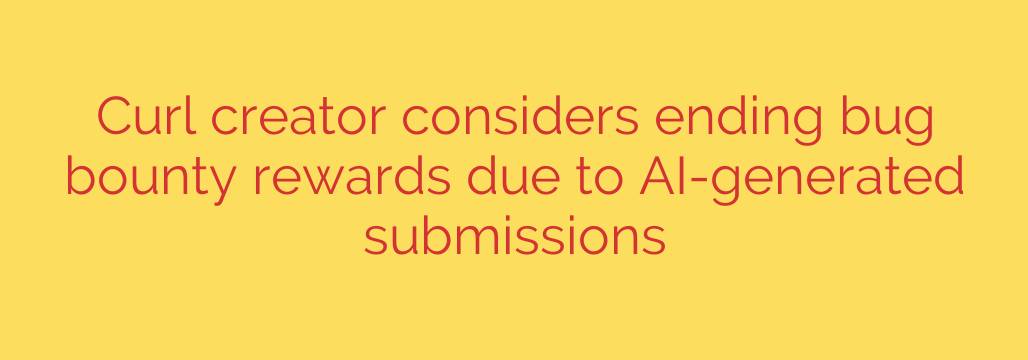
Is AI Flooding Bug Bounty Programs and Harming Cybersecurity?
The landscape of cybersecurity is constantly evolving, and the emergence of AI tools is creating both opportunities and challenges. One growing concern is the potential impact of AI-generated submissions on bug bounty programs, a vital component of modern software security.
Bug bounty programs incentivize security researchers to identify and report vulnerabilities in software and systems. These programs have become increasingly popular, offering financial rewards for valid bug reports. However, there are concerns that the rise of readily available AI tools capable of generating code and identifying potential security flaws might be leading to a flood of low-quality or even invalid submissions, potentially overwhelming maintainers and undermining the overall effectiveness of these programs.
One of the main issues is the sheer volume of AI-generated submissions, many of which lack the necessary context, depth, or accuracy. Security researchers must carefully analyze and validate each bug report, a process that can be time-consuming and resource-intensive. If a significant portion of these reports are generated by AI and turn out to be false positives or duplicates, it can create a significant burden on the researchers, diverting their attention from genuine security threats.
This influx of low-quality submissions could also lead to “bounty fatigue,” where maintainers become discouraged by the constant need to sift through irrelevant reports. This could ultimately reduce the overall participation of security researchers in bug bounty programs, which could increase the risk of genuine vulnerabilities going undetected.
Furthermore, relying solely on AI-generated bug reports can create a false sense of security. AI tools are not a replacement for human ingenuity and critical thinking. While they can be effective at identifying certain types of vulnerabilities, they may miss more subtle or complex flaws that require human expertise to uncover.
So, what can be done to address this challenge? Here are a few potential strategies:
- Implement stricter submission guidelines: Clearly define the criteria for valid bug reports and provide detailed instructions on how to properly document and report vulnerabilities.
- Improve validation processes: Develop more efficient and accurate methods for validating bug reports, potentially using AI-powered tools to filter out low-quality submissions.
- Focus on rewarding high-quality reports: Adjust the bounty structure to prioritize and reward researchers who submit well-researched, high-impact bug reports.
- Educate and train AI users: Provide resources and guidance on how to use AI tools responsibly and ethically in bug bounty programs. This includes ensuring that AI-generated reports are thoroughly reviewed and validated before submission.
The rise of AI presents both opportunities and challenges for the cybersecurity community. By addressing the potential downsides of AI-generated bug reports, we can ensure that bug bounty programs remain an effective tool for identifying and mitigating security vulnerabilities. This involves adopting a balanced approach that leverages the power of AI while maintaining the crucial role of human expertise and critical thinking.
Source: https://go.theregister.com/feed/www.theregister.com/2025/07/15/curl_creator_mulls_nixing_bug/








